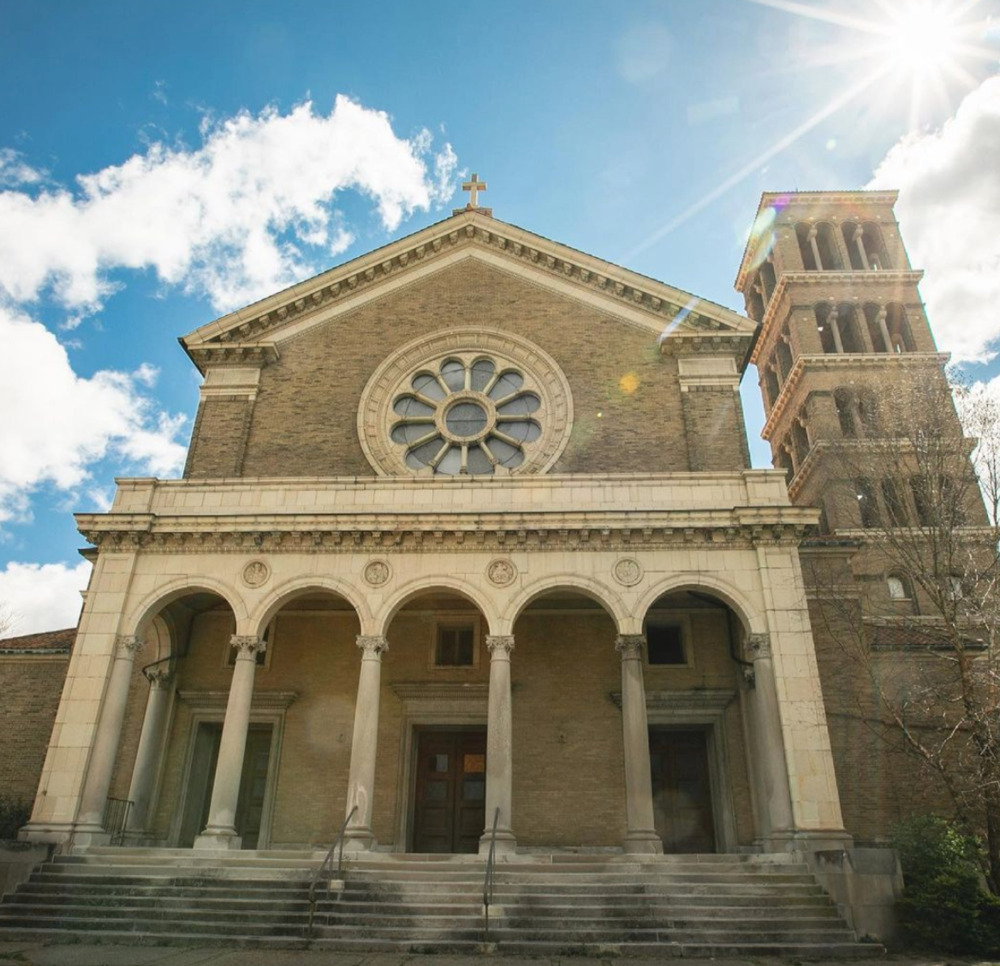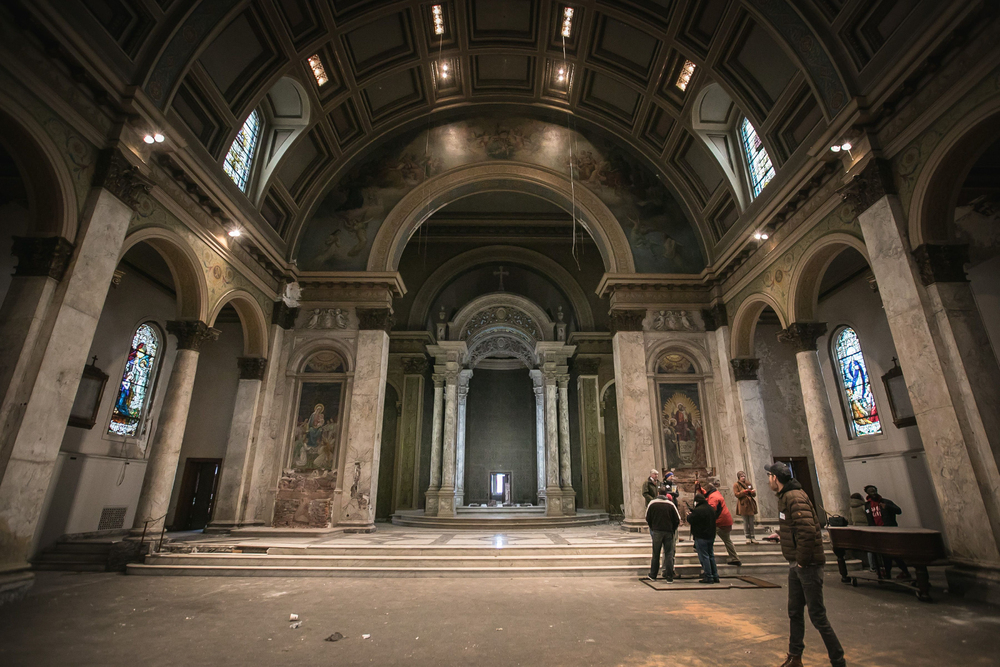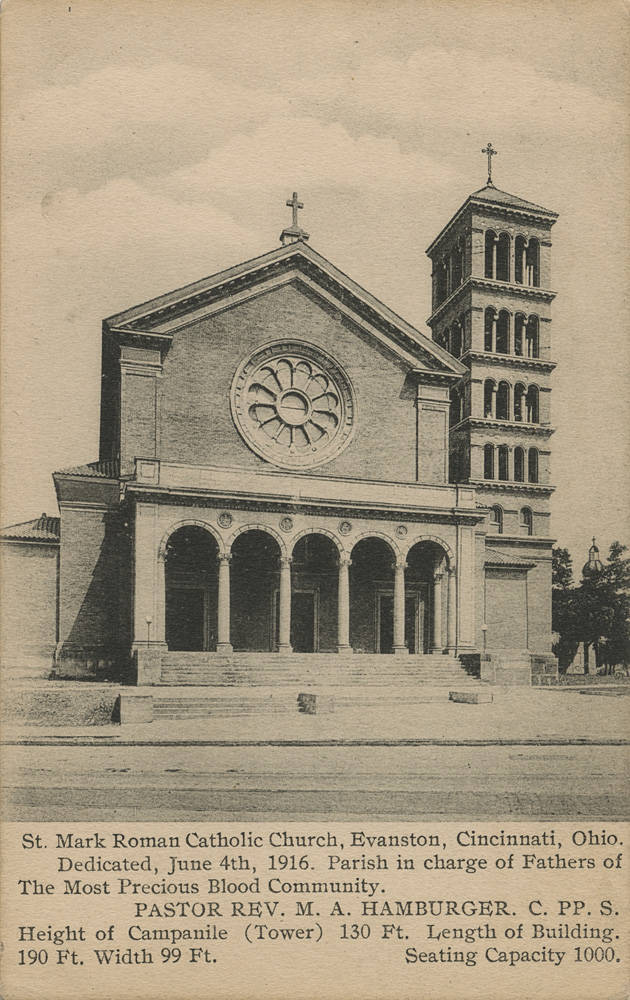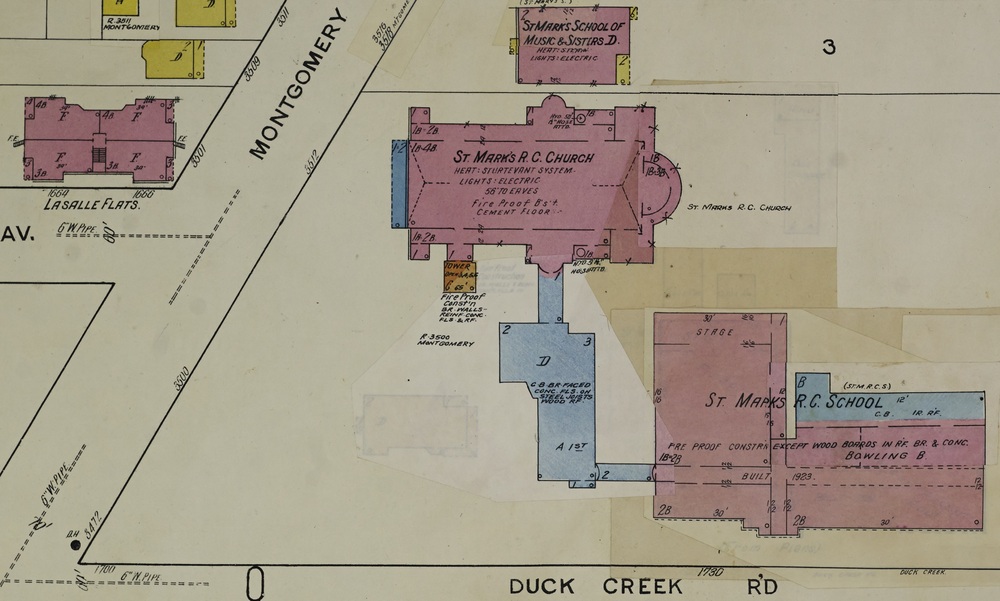St. Mark Church
More Than Just a Church to Evanston's Black Community
Summary
Built in 1916 by architect Henry J. Schlacks, at a cost of $150,00 (over $3.5 million today), St. Mark’s Church features a 130-foot tall bell tower that is visible from almost anywhere in the neighborhood, including Interstate 71, which was built through the neighborhood in 1972. This light-colored, painted brick ecclesiastical building, located at 3500 Montgomery Road, held services for the local Catholic parish until 2010 and now sits vacant. There is even a school building at its rear and a cemetery across the street that used to be affiliated.
History
In 1904, the Missionaries of the Precious Blood expressed interest in establishing a parish in Evanston, a new middle-class suburb of Cincinnati where there were over 100 Catholic families, many of Polish and German descent. Permission was granted to establish the St. Mark parish in 1905.
The first services were held at the residence of Mary Klinckhamer. A temporary frame building was soon erected on land that Mary donated, with a cornerstone for the combination church and school laid on April 29, 1906. The new building was dedicated on October 28. A convent was added in 1909 for the Sisters of the Precious Blood who operated the school. The school and church were both at capacity by 1911.
The cornerstone for the new church was laid in 1914. The new building opened in 1916 at the cost of $150,000. The exterior boasted mild brown brick with terracotta components, colored to match Roman Travertine stone, with a Verona facade and imported orange Roman tiles. The new complex also included a 130-foot campanile. The interior included three consecrated altars built from Botticino marble. The high altar contained images of the twelve apostles, surmounted by a baldachino comprised of Breccia marble. The side altars featured Lady as Queen of Angels and Mother Hen, and St. Joseph as Scion of the House of David and Patron of the Universal Church. A mural in the sanctuary, which depicted the Lamb of God, was painted by Leo Mirabile. Several statues included Sacred Heart, St. Anne, St. Mark and St. Rose, all constructed of Carrara marble. Zettler of Munich, Germany crafted the stained glass windows.
St. Mark’s sanctuary had a capacity of 850 persons, with a choir gallery and two votive chapels holding 150 persons total. The school burned in 1922 but was replaced in 1923. A large pipe organ, built by Kilgen, was installed in 1933. A bowling alley and youth club were added to the church in the 1940’s. A Mission House for the Previous Blood Fathers, designed by A.M. Strauss of Fort Wayne, Indiana, was built in 1950. The house replaced the original frame church, and contained residences for the pastor and assistant pastors, the mission band, religious instruction for St. Mark’s Cathedral information center and meeting rooms for parish societies.
At St. Mark’s height in the mid-1950’s, over 1,200 families worshiped regularly. The neighborhood was in decline by the 1970’s as suburbs developed further out in the county. The construction of Interstate 71 in 1972, which passed adjacent to the church, led to hundreds of homes being razed, further starving St. Mark of its congregation. By the late 20th century, St. Mark had just a small congregation of mostly African-American Catholics.
Images



